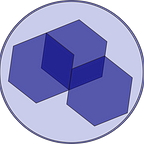NXP Shells, Modules & Entry
NXP a networked-self experiment. Each NXP has a shell where modules can be joined together. What is a module? The network experiment question being asked? The data used (devices, data type, tidy up, categories etc), the computation being used to create results e.g. a daily average to a machine learning model, Controls: does the experiment lend itself to blinding, sampling technique etc?, Scientific review: what methods is used n=1, statistics etc., does the experiment involve an intervention, lifestyle, food, meditation to pharmaceutical drugs or plants? and what visualisation is being presented? Table, chart or simulation. The Modules comes with their own tools or a toolbar that enables customisation.
Each module contains an entry(ies). For example in the data module, an entry would include time, datatypes, source data e.g. an entry for every 24 hours. In the heathscience protocol such entries are called KBIDs (knowledge bundle IDs) and we use cryptography to form the KBID addresses. The same for modules and the NXP shell they are all assigned cryptographic identities via the Computational Network Reference Layer (CNRL that guarantees data interoperability). Prototype code showing example modules and folder of the actual module code. Demo will follow below soon to show this in practice.
